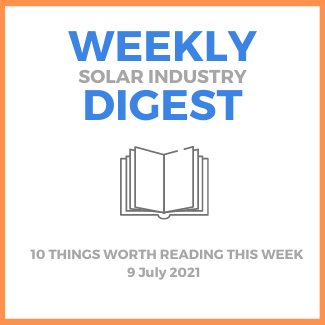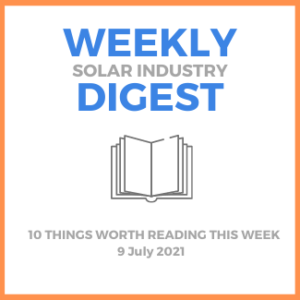SPW published a guide to bidding for, procuring and performing federal solar contracts. It includes how to use the System for Award Management website to find jobs and register to be eligible, info on subcontracting and small biz oppts, and steps through the procurement and contracting process.
GridWise Alliance, which includes Microsoft, IBM, labour unions and utilities, sent out a call to Congress to invest $50 billion in grid modernization to expand and upgrade T&D networks and pursue other initiatives that would drive job growth and economic recovery and mitigate climate change.
Schnieder Electric digs into how to upgrade firmware on Conext devices. The video looks at the benefits of upgrading (like new features, improved stability and security), how to find and upgrade the Conext Gateway or Conext Combox on a network and how to prevent or recover from upgrade issues.
Generac has acquired Chilicon Power, creator of grid-interactive microinverter and monitoring solutions. It is Generac’s bid to dive into the microinverter markets so as to maximize PV production, lower install costs, and ease battery and generator integration.
PACE Funding Group is now called Home Run Financing and is offering a new, unsecured loan product, Home Run Loans. It’s available in CA, FL, MO, and KS and can be used on renewable and home improvement projects. Contractors have a single source for clients around PACE or unsecured loans.
The grid is really ill equipped to handle climate change. This is due to patchwork-style oversight, independent grids like Texas that are more vulnerable to problems, hot weather pushing up demand and leading to overcapacity, and difficulties making long term weather projections because of climate change.
Why the rise in storage? Consumers want independence from high energy costs and demand shifting, seek energy independence and resilience, and are looking to replace their generators. COVID plus the power outages and recent issues in TX and CA have fed the rise. End result = storage increasingly a “must” for installers.
The healthcare industry is a strong opportunity for installers, given the industry’s recent growth in renewables. Medical facilities want to cut high electrical bills, keep power sources stable since they often have life saving equipment, and want to operate sustainably to stay aligned with their values.
Some power providers are skeptical about Biden’s plan to decarbonize the power sector by 2035 but think reducing greenhouse gas emissions 80% by 2030 is doable. This includes doubt on the part of investor-owned utilities, with only a handful of them on track to meet the 2035 target.


